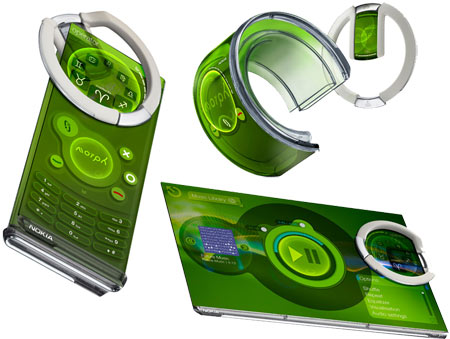<
Nokia Research Center together with the University of Cambridge (UK) have unveiled a new concept phone called Morph which works on the principle of nanotechnology. The phone was showcased at the “Design and the Elastic Mind” exhibition which runs from February 24 through May 12, 2008 at the Museum of Modern Art (MoMA) in New York.
Basically, Nokia’s Morph concept phone demonstrates how future devices might be stretchable and flexible, allowing the user to transform their handsets into radically different shapes. According to Nokia, it showcases the ultimate in functionality that nanotechnology might be capable of delivering.
“We hope that this combination of art and science will showcase the potential of nanoscience to a wider audience. The research we are carrying out is fundamental to this as we seek a safe and controlled way to develop and use new materials,” said Dr. Tapani Ryhanen, Head of the NRC Cambridge UK lab, Nokia.
Professor Mark Welland, Head of the Department of Engineering’s Nanoscience Group at the University of Cambridge and University Director of Nokia-Cambridge collaboration added, “Developing the Morph concept with Nokia has provided us with a focus that is both artistically inspirational but, more importantly, sets the technology agenda for our joint nanoscience research that will stimulate our future work together”
Elements of the Morph concept phone might be ready for integration into handheld devices in another seven years from now. It is known that initially, such nanotechno0logy elements would be available only in high-end models.
Researchers however, believe that nanotechnology could one day lead to low cost manufacturing solutions and could also offer the possibility of integrating complex functionality at a low price.
This partnership between Nokia and the University of Cambridge was first announced in March 2007. Together, they decided to work on an extensive and long term programme of joint research projects.
